Lepcis Magna, Plaza and Nymphaeum
Q68083385Lepcis Magna: Phoenician colony, later part of the Carthaginian empire, the kingdom of Massinissa, and the Roman empire. Its most famous son was the emperor Septimius Severus (r.193-211).
Nymphaeum
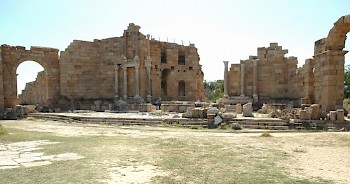
East of the Palaestra, the Colonnaded Street began, which connected the Hadrianic Baths and the Palaestra to the Port of Lepcis Magna. At the beginning of the Colonnaded Street was an oval place, which the excavators have called the "Plaza". The southeastern part of it was a Nymphaeum, a wall-like fountain.
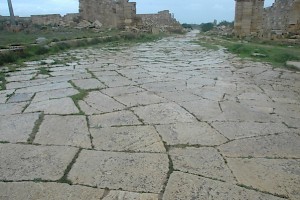
The arch to the left on the first photo marks the beginning of the Colonnaded Street; if you passed through it, you would be on the southeastern sidewalk. The arch to the right, which is only partly visible on the photo, was the beginning of the sidewalk along a street connecting the Palaestra and the Hadrianic Baths to the Wadi Lebda. Colonnaded Street and Plaza were constructed during the reign of the emperor Septimius Severus (r.193-211), a native of Lepcis.
Of course the Nymphaeum was beautifully decorated. There were two levels of marble columns, made of cipollino from Euboea (lower level) and red granite from Egypt (upper level); in the niches, there must have been statues. Essentially, this fountain was like the wall behind the stage of a Roman theater.
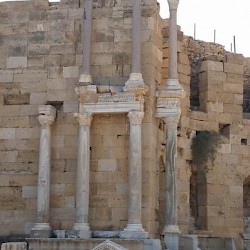 Lepcis Magna, Plaza, Northern part of the Nymphaeum |
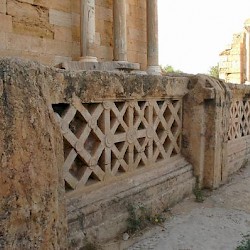 Lepcis Magna, Plaza, Nymphaeum, parapet |
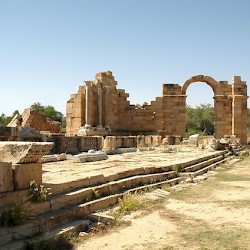 Lepcis Magna, Nymphaeum |
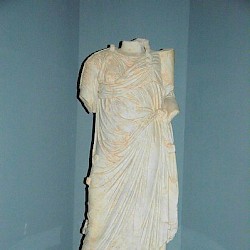 Lepcis Magna, Plaza, Nymphaeum, Statue of a lady |
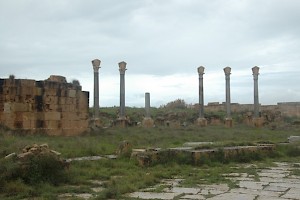
The walls must have been covered with plates of expensive marble, and of course there must have been statues of the Nymphs, the goddesses of the sources. The central apse, where these sculptures must have stood, were destroyed by a flash flood in 1986. The parapet appears to be a later addition.
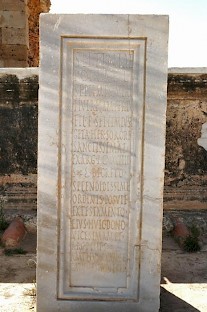
Across the plaza were a market building and an exedra (a semi-circular area), of which hardly anything remains, except for several columns of grey, Egyptian granite. However, what survives is quite interesting: the inscription of an expensive silver statue dedicated to Septimia Polla, a sister of the father of the emperor Septimius Severus.note The amount of silver covering the statue equals almost fifty-two kilos and documents the incredibly wealth of the elite of the Roman Empire in the second century CE. The statue itself was, of course, made of a different material, natural stone.
To Septimia Polla, daughter of Lucius Septimius Severus, duumvir, forever priest, has Publius Septimius Geta, heir of his most sacred sister, erected this [statue] from 144½ pounds of silver and 10½ ounces of the most splendid quality, as decreed in her will. To this gift was added one twentieth and 4½ pounds, 10½ ounces of silver more than had been bequeathed.